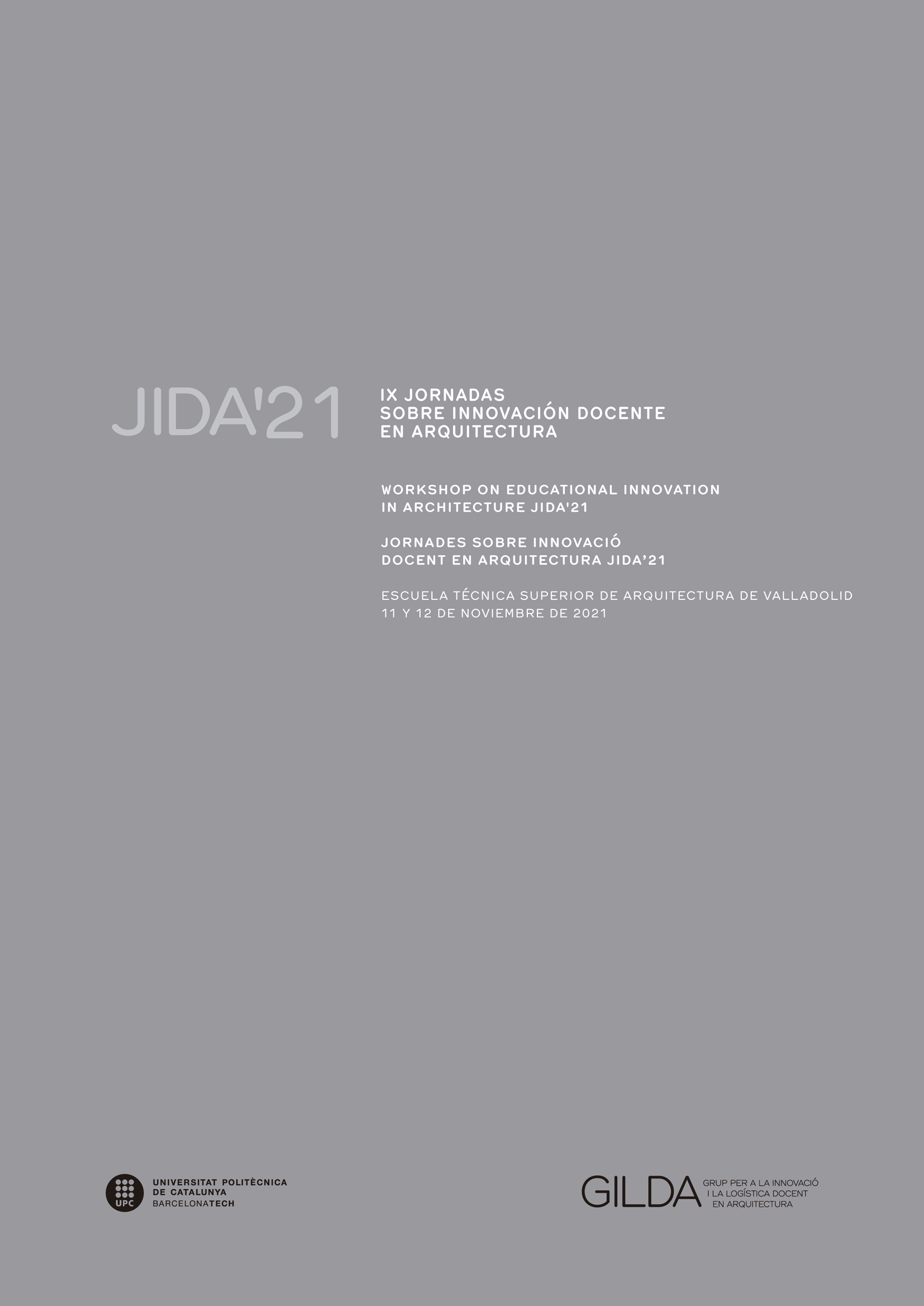Cuaderno de empatía: una buena práctica para conocer al usuario desde el inicio del proyecto
DOI:
https://doi.org/10.5821/jida.2021.10598Palabras clave:
design thinking, etnografía, empatía, usuario, diseño centrado en el usuarioResumen
La importancia de entender al usuario final para el desarrollo de un proyecto de arquitectura o diseño es hoy en día algo indiscutible. Sus necesidades, expectativas y aspiraciones, indagadas a través de la empatía, permiten definir (o redefinir) el problema con el que trabajar en fases posteriores. Sin embargo, es habitual ver que los proyectos se comienzan generando ideas y aportando soluciones, sin parar a reflexionar sobre estas cuestiones clave. Esta experiencia ha puesto en marcha una práctica docente, el Cuaderno de Empatía, como medio de toma de conciencia sobre la importancia de la fase de investigación y conocimiento del usuario, ofreciendo recursos con los que poder realizar un entendimiento más profundo del mismo a través de la empatía. Los beneficios se han visto reflejados directamente en las soluciones propuestas y se ha observado la repercusión fuera de las asignaturas donde se ha desarrollado.
Citas
AALTO, A. (1940). "The Humanizing of Architecture" en The Technology Review.
BROWN, T. (2008). "Design Thinking" en Harvard Business Review, 86(6) p.84-92.
COOPER, A.; REINMANN, R.: CRONIN, D.; y NOESSEL, C. (2014). About face: The essentials of interaction design. New Jersey: John Wiley & Sons.
CROSS, N. (1982). "Designerly ways of knowing" en Design Studies, 3(4). p.221-227. <https://doi.org/10.1016/0142-694X(82)90040-0>
CROSS, N. (2011). Design Thinking. Understanding how designers think and work. Londres: Bloomsbury.
DESIGN COUNCIL. (2019) What is the framework for innovation? Design Council's evolved Double Diamond. <https://www.designcouncil.org.uk/news-opinion/what-framework-innovation-design-councils-evolved-double-diamond> [Consulta: 20 de septiembre de 2021].
EAMES, C.; EAMES, R.; y OSTROFF, D. (ed.). (2015): An Eames Anthology. New Haven: Yale University Press.
IDEO. (2009). The Field Guide to Human-Centered Design. <https://www.designkit.org//> [Consulta: 20 de septiembre de 2021]
HEYLIGHEN, A. y DONG, A. (2019). "To empathise or not to empathise? Empathy and its limits in design" en Design Studies, 65. p.107-124. <https://doi.org/10.1016/j.destud.2019.10.007>
KOUPRIE, M. y SLEESWIJK VISSER, F. (2009). "A framework for empathy in design: stepping into and out of the user's life" en Journal of Engineering Design, vol.20 (5), p. 437-448. <https://doi.org/10.1080/09544820902875033>
LAWSON, B. (2006). How Designers Think. The Design Process Demystified. Oxford: Elsevier, Ltd. (1ªed: 1980).
LIEDTKA, J. y OGILVIE, T. (2011). Designing for growth: a design thinking tool kit for managers. New York: Columbia University Press.
MOORE, P. y CONN, C.P. (1985). Disguised: A True Story. Waco, TX: Word Books.
ROWE, P.G. (1987). Design Thinking. Boston: MIT Press.
SEGAL, L.D. y FULTON SURI, J. (1997). "The empathic practitioner: Measurement and interpretation of user experience" en Proceedings of the Human Factors and Ergonomics Society - Annual Meeting, 41(1), p.451-454. <https://doi.org/10.1177/107118139704100199>
SLEESWIJK VISSER, F. (2009). Bringing the everyday life of people into design. Rotterdam: Technische Universiteit Delft.
The loop (Dir. IBM design team). (2017). IBM + InVision. <https://www.invisionapp.com/enterprise/ibm-design-thinking> [Consulta: 20 de septiembre de 2021].
TRAVERS, D.F. (2014). Arts & Architecture 1945-49. Colonia: Taschen.
VEGA, E. (2018). "Los orígenes del Design Thinking. El diseño como una forma de pensamiento" en Experimenta, 77. 128-136.






















